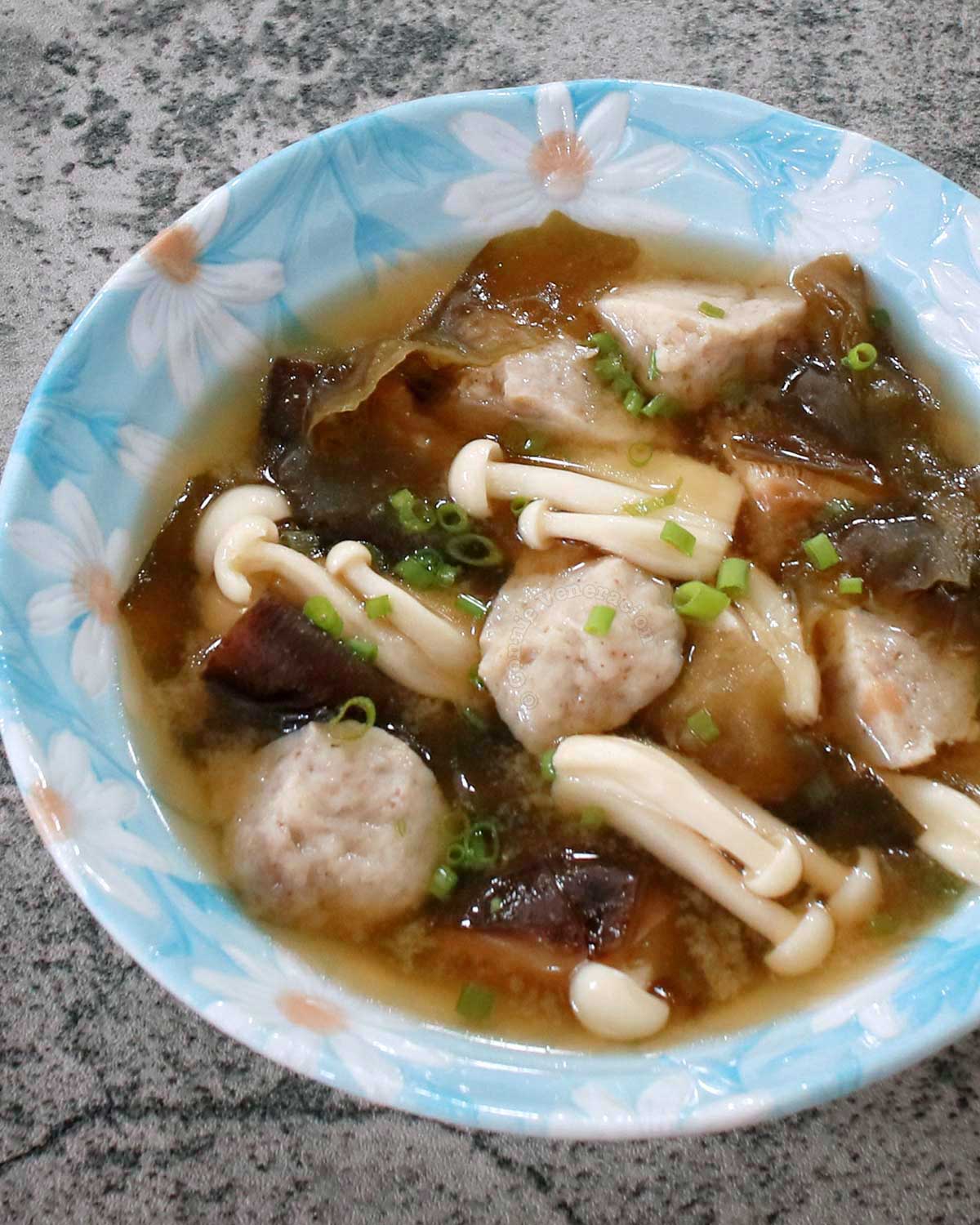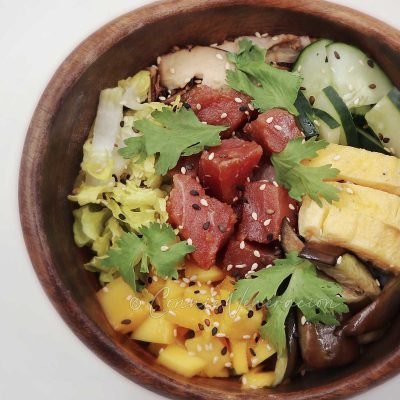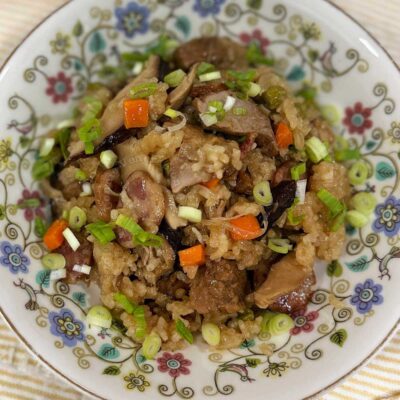We all love miso soup here at home but I have to admit that my husband and daughters are not huge fans of tofu. Whenever there is an opportunity to use another ingredient, I do not hesitate to substitute. That’s the case in this mushroom miso soup.
This is an updated recipe. The first time I cooked mushroom miso soup, it was a hurried affair. It was Christmas Eve, and my husband and our older daughter were shocked that soup was not included in the menu. So I took what I could find in the fridge and mushroom miso soup was the result.
This version, although twice as good as my first attempt, is a hurried affair too. We were having Japanese fried chicken for dinner and there was nothing to go with it. I knew there was an open package of mushroom balls in the freezer and a pack of shimeji in the fridge. Dried shiitake and wakame are mainstays in our pantry, so… why not?
If you’re not very familiar with the ingredients for miso soup, I have prepared a visual guide which, hopefully, will make this recipe sound less mysterious and elevate it into one that is very much doable.
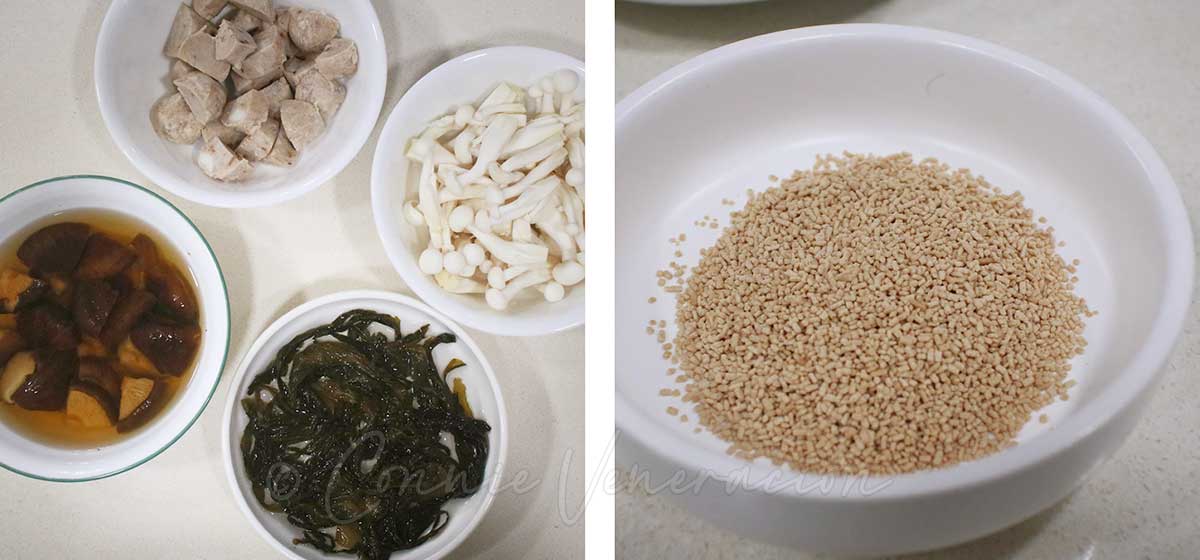
Above, the photo on the left shows the rehydrated shiitake (which I had already cut into quarters), the thawed mushroom balls (which I had also quartered), the shimeji with the root ends cut off and discarded, and the wakame soaking in warm water.
Mushroom balls are available in most Asian groceries. They are sold frozen alongside other ingredients that go into a hot pot. Wakame is a seaweed that is sold dried. It needs to soak in warm water to rehydrate then cut into small pieces.
That’s a tablespoon of dashi granules in the photo on the right. While it is easy to make dashi by simmering shaved katsuobushi (smoked and fermented skipjack tuna) and kombu (edible kelp), if you’re new to Japanese ingredients, dashi granules should make things more convenient. They are sold in packets, and the contents of a packet is about a tablespoonful — just enough to make a liter of broth.
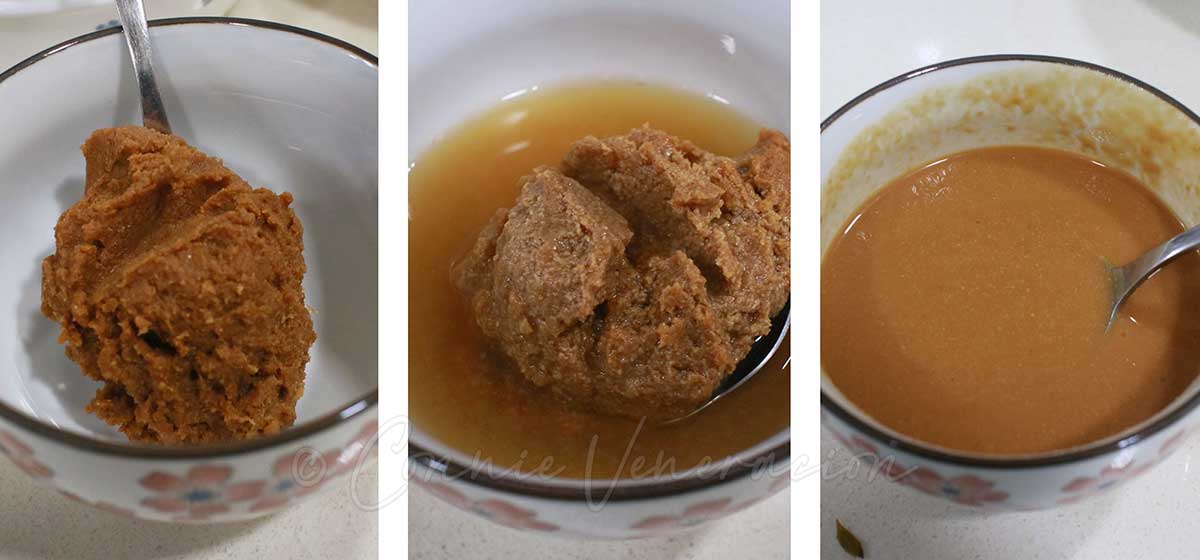
Miso is a seasoning made with fermented soy beans. It comes in a variety of colors, from white to brown, and the flavor ranges from mild to strong. For making miso soup, we use brown miso paste. You will find it in Asian groceries. It is sold in tubs and vacuum-sealed bags. Miso needs to be refrigerated once the tub or bag is opened. You will need only a heaping tablespoon of miso to make a pot of soup. To use, add a few tablespoons of simmering broth to the thick paste, stir to dissolve and add to the soup in the pot.
Mushroom miso soup cooks fast. So, have everything ready before you begin. If using dried shiitake, make sure they had been sufficiently rehydrated. Fresh mushroom should have been cleaned and trimmed. The wakame should have also been soaked, squeezed and cut into small pieces.
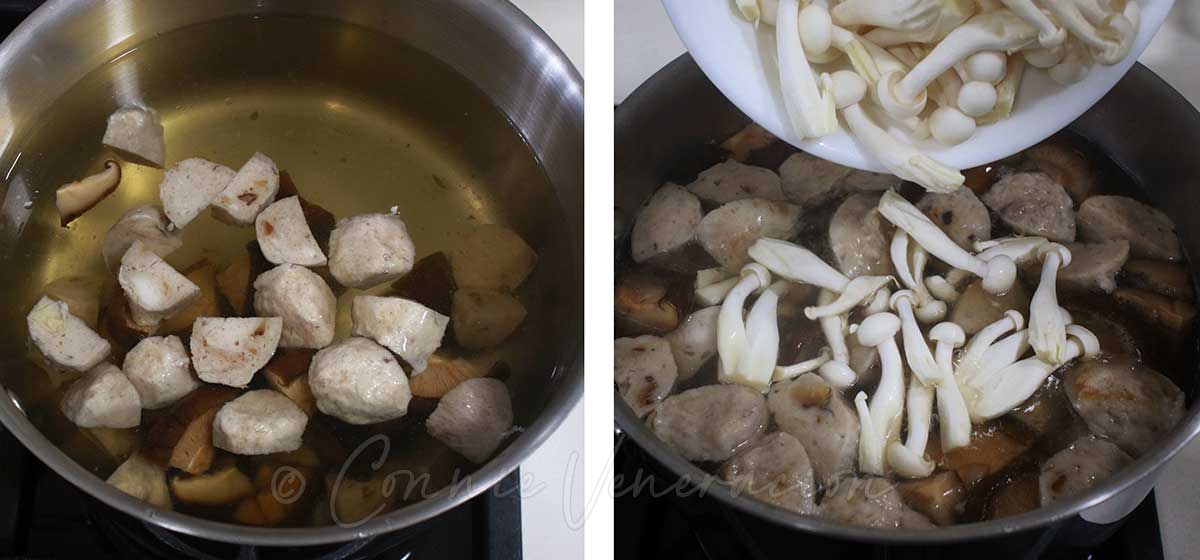
Boil water in a pot and stir in the dashi granules. Drop in the mushrooms balls and shiitake. They need to go in first because they are larger and more dense and, hence, they need to simmer in the broth longer. After two to three minutes, add the shimeji and stir.
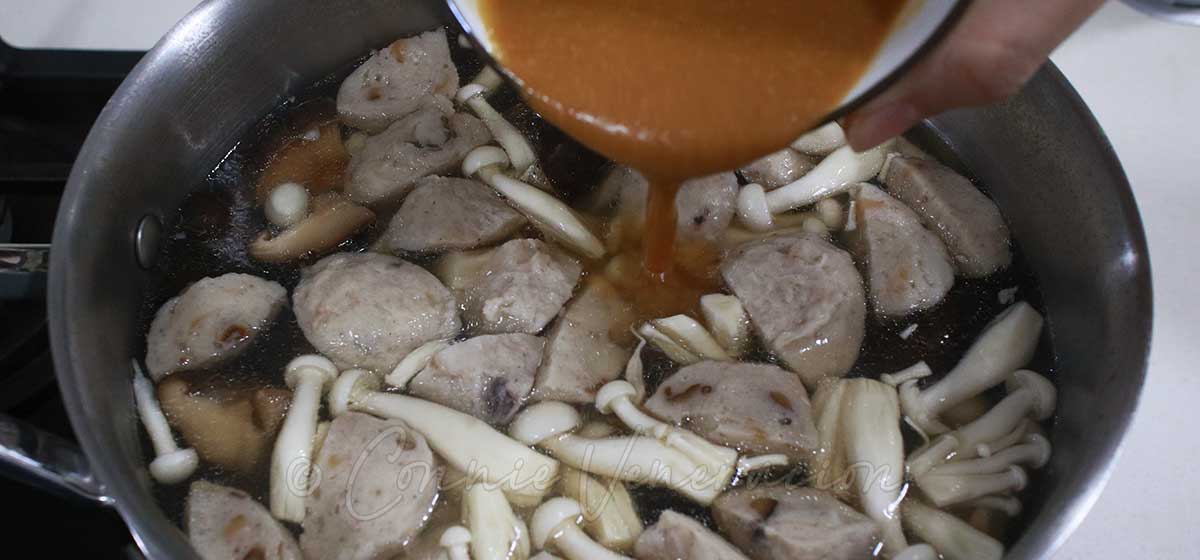
Once the broth comes to a boil once more, turn off the heat, pour in the diluted miso paste and stir. Taste the broth. If it’s too bland, add a few pinches of salt. Taste again and adjust the seasonings as needed.
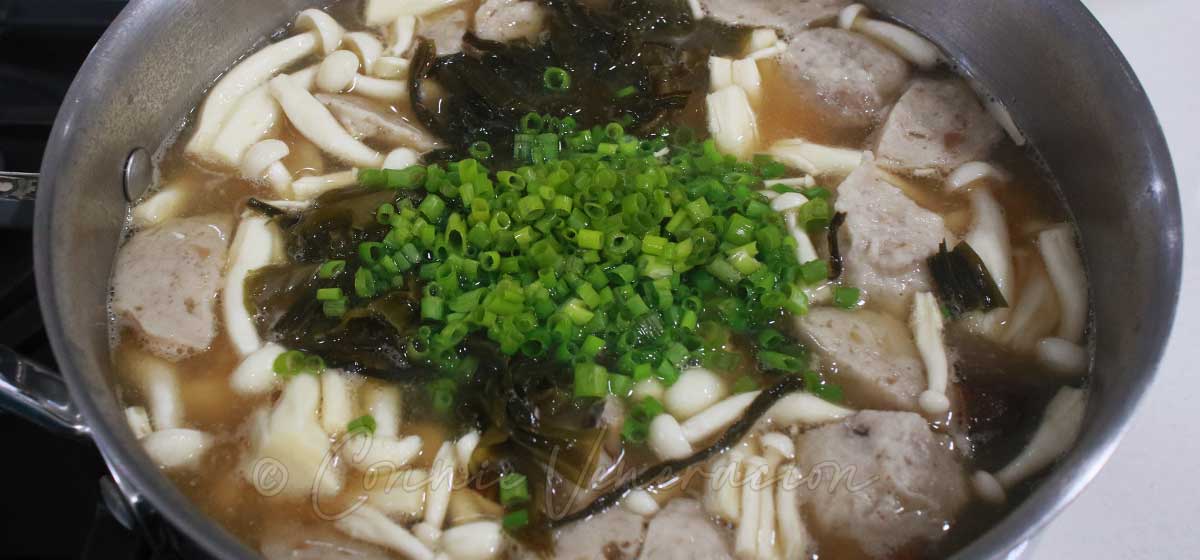
When you’re satisfied with the flavor of the broth, add the wakame and, optionally, a handful of thinly sliced scallions, and stir. Your mushroom miso soup is ready to be enjoyed.
Mushroom miso soup
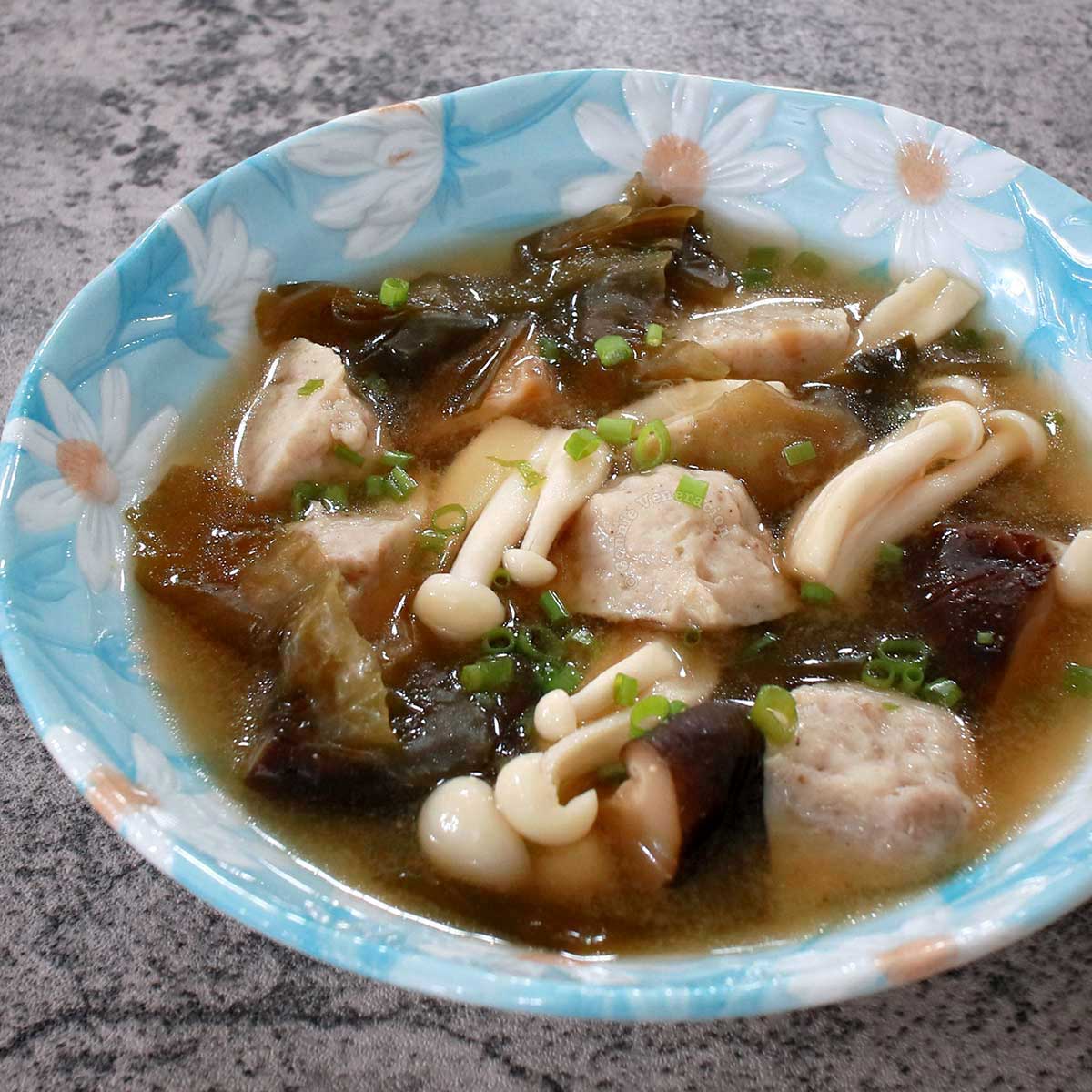
Ingredients
- 1 tablespoon dashi granules
- 5 to 6 shiitake (soaked to rehydrate if using dried) quartered
- 5 to 6 mushroom balls thawed and quartered
- 150 grams fresh shimeji root ends cut off and discarded
- 1 heaping tablespoon brown miso paste
- salt to taste
- 2 to 3 tablespoons dried wakame soaked in warm water, squeezed and sliced
- 2 to 3 tablespoons finely sliced scallions
Instructions
- Pour a liter of water into a pot and bring to the boil (you may also add the mushroom soaking water if you're using dried shiitake).
- Stir in the dashi granules.
- Drop in the mushroom balls and shiitake, and allow to boil for two to three minutes.
- Take a few tablespoonfuls of the hot broth and stir into the miso paste to thin it until pourable.
- Add the shimeji to the pot and allow the soup to come to a hard boil.
- Turn off the heat, pour in the diluted miso and stir.
- Taste and add salt, if needed.
- Add the wakame and scallions, stir and serve.

